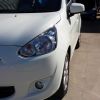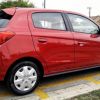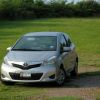
Originally Posted by
MetroMPG

Off the top of my head, the 1st generation base model Metros that were that light ...
- were much smaller,
- had 12 inch wheels/tires,
- had much smaller brakes
- had smaller, lighter engines
- had smaller, lighter transmissions & axles
- fewer amenities (no radio on the base model, definitely no A/C standard)
- no rear wiper
- possibly no outside passenger mirror
- no airbags
- fewer structural reinforcements for crash protection
- manual steering
- minimal sound insulation
And probably some other things I'm forgetting...
My 3rd generation Metro is a base model that weighs in at around 1830 lbs. It's got better crash protection, bigger wheels/tires and better safety structure than the 1st & 2nd gen cars. It's a bit bigger, too.
My guess was that they were smaller and had less crash protection. I didn't realize there were so many smaller factors.
Thanks!
I think one reason mpg seemed better on those older cars is because the US govt changed the way they calculate mpg around 10 years ago. I think it was a pretty significant change so that a car that got 40 mpg might only get 35 with the new method.
__________________________________________
 View my fuel log 2014 Mirage 1.2 automatic: 39.7 mpg (US) ... 16.9 km/L ... 5.9 L/100 km ... 47.6 mpg (Imp)
View my fuel log 2014 Mirage 1.2 automatic: 39.7 mpg (US) ... 16.9 km/L ... 5.9 L/100 km ... 47.6 mpg (Imp)


 My Car
My Car
 Reply With Quote
Reply With Quote
 Mitsy
Mitsy The Stormtrooper
The Stormtrooper
 "Global Small" Concept
"Global Small" Concept Even Fancier Metro (Mirage #2)
Even Fancier Metro (Mirage #2) Fancy Metro (Mirage #1)
Fancy Metro (Mirage #1) Loaner #1 from Mitsubishi
Loaner #1 from Mitsubishi Loaner #2 from Mitsubishi
Loaner #2 from Mitsubishi Mirage #3: Appliance Car
Mirage #3: Appliance Car
 Bae
Bae
 2017 Mitsubishi Mirage ES
2017 Mitsubishi Mirage ES


 2015 Test Mirage
2015 Test Mirage Swarthy
Swarthy
 Gray Thing
Gray Thing White Thing #2
White Thing #2
